16 Ferocious Creatures That Make Even Rattlesnakes Think Twice
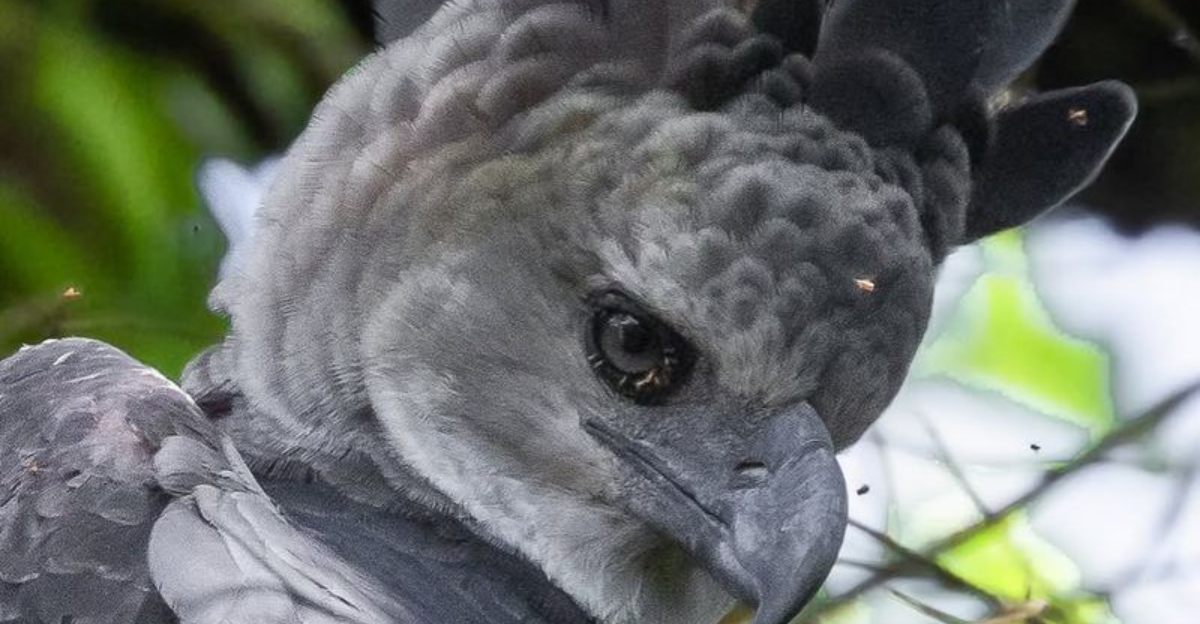
Prepare to meet the untamed beasts of the natural world, where survival is a game and each creature is a master player. These are not your average critters; these ferocious beings have honed their skills and instincts to make even a rattlesnake reconsider crossing paths.
From the dense jungles to the arid deserts, from the icy waters to the tallest mountains, each of these incredible animals has a story to tell and a reputation to uphold. So, buckle up and embark on an adventurous journey through the wild terrains and discover ferocious creatures that redefine the word ‘fierce.’
1. African Lion
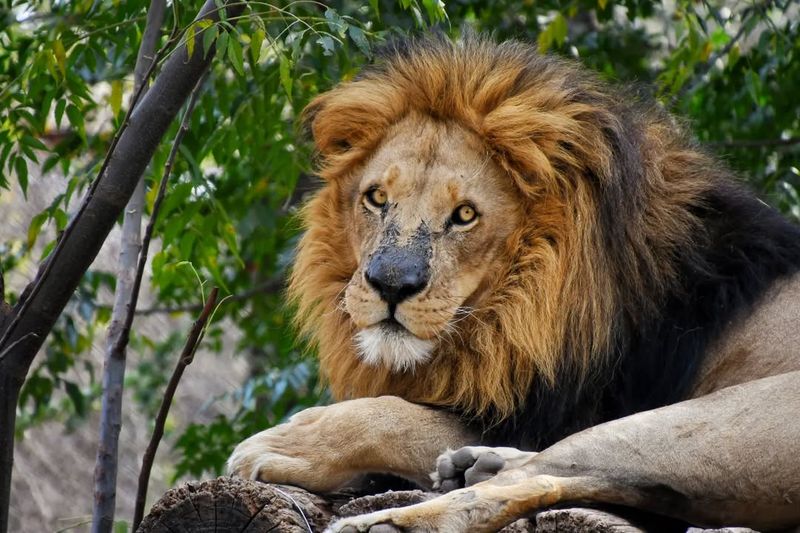
The African lion, a symbol of strength and courage, reigns as the king of the savannah. Known for its powerful presence, there’s more to this apex predator than meets the eye. The lion’s roar, audible from miles away, serves as a reminder of its dominance. A social cat, it thrives in prides, forming complex social structures that are crucial for survival.
Despite its reputation, the lion faces challenges like habitat loss and human-wildlife conflict. Conservation efforts aim to secure its future, but these regal felines continue to face threats. Their coordinated hunting tactics and teamwork make them formidable hunters. Adaptive and fierce, lions embody the raw power of nature.
Lions spend most of their day resting, conserving energy for nighttime hunts. Their majestic appearance and thrilling presence captivate those who witness them in their natural habitat. With populations dwindling, they remind us of the fragile balance of the ecosystem and the importance of preserving these iconic creatures for future generations. Their powerful jaws and sharp claws are not just for show; they are essential tools for survival.
2. Bengal Tiger
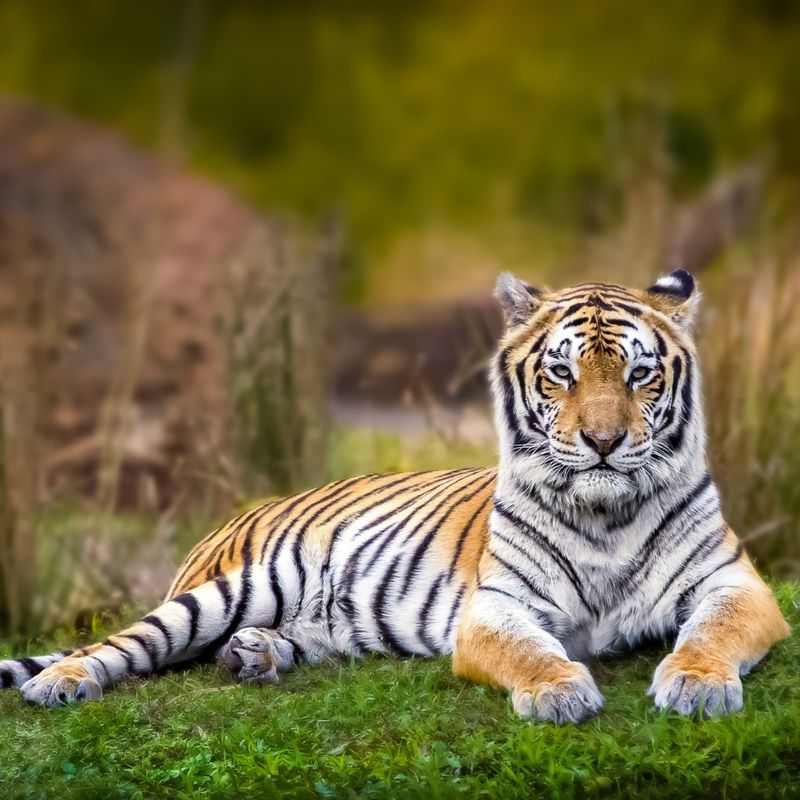
In the dense jungles of India, the Bengal tiger reigns supreme as a master of stealth and power. With its striking orange coat and black stripes, it blends seamlessly into its surroundings, becoming almost invisible as it stalks its prey. This solitary hunter relies on its keen sense of sight and hearing to track down a meal.
Bengal tigers are powerful swimmers, crossing rivers and streams with ease in pursuit of prey. Despite their solitary nature, these big cats play a vital role in maintaining the ecological balance of their habitat. They control populations of herbivores, preventing overgrazing and promoting healthy forests.
Threatened by poaching and habitat loss, Bengal tigers face an uncertain future. Conservationists are working tirelessly to protect these majestic creatures and their habitats. With their fierce beauty and unmatched prowess, Bengal tigers captivate the imagination of all who encounter them. Their legendary strength and agility, combined with a regal presence, make them a true embodiment of wildness.
3. Great White Shark
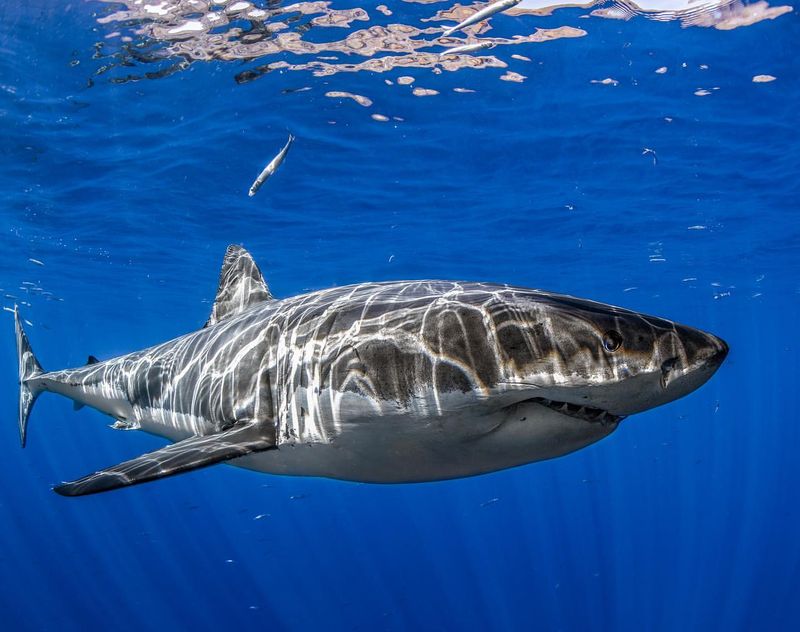
Beneath the ocean’s surface, the great white shark dominates as an apex predator, feared and respected across the seven seas. Its sleek body and powerful jaws make it a formidable hunter, capable of taking down prey with precision and speed. Often misunderstood, these sharks play a crucial role in marine ecosystems, keeping populations of prey species in check.
Known for their incredible sense of smell, great whites can detect a drop of blood from miles away. This ability aids them in locating food in the vast ocean. Despite their intimidating reputation, shark attacks on humans are rare, and they are more threatened by human activities than the other way around.
Conservation efforts are underway to protect these fascinating creatures from threats like overfishing and habitat destruction. Their presence in the ocean is a testament to the delicate balance of marine life. As we learn more about these enigmatic predators, we gain a deeper appreciation for their role in the ocean’s intricate web of life.
4. Saltwater Crocodile
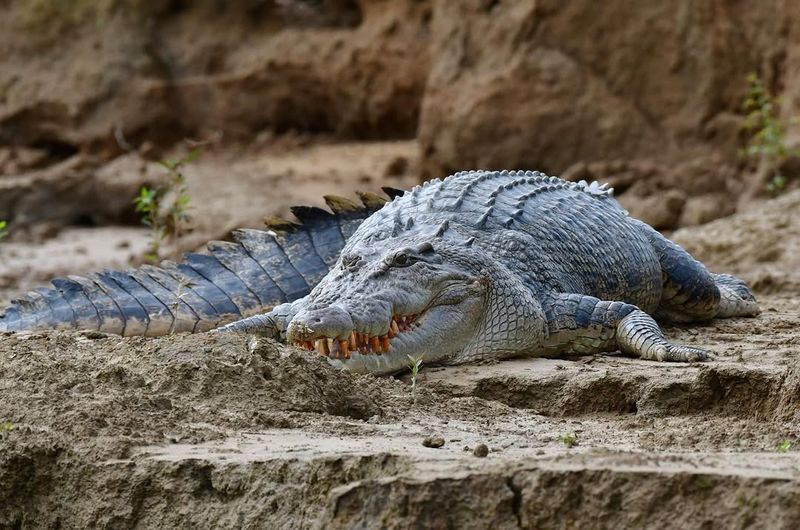
In the murky waters of mangroves and estuaries, the saltwater crocodile reigns as one of the most fearsome reptiles on the planet. With its prehistoric appearance and unmatched strength, this crocodile is a living relic of a bygone era. Known for its patience and stealth, it lies in wait for the perfect moment to strike.
Saltwater crocodiles are masters of ambush, capable of exploding into action with lightning speed to capture unsuspecting prey. Their powerful jaws can crush bones with ease, making them formidable hunters. Despite their fearsome reputation, these reptiles play a crucial role in their ecosystems, controlling populations of fish and other aquatic species.
Human encounters with saltwater crocodiles can be dangerous, and respect for their territory is essential to coexistence. Conservation efforts help protect their habitats, ensuring that these ancient creatures continue to thrive. Their sheer size and power make them a remarkable sight in the wild, a reminder of the raw and untamed forces of nature.
5. Komodo Dragon
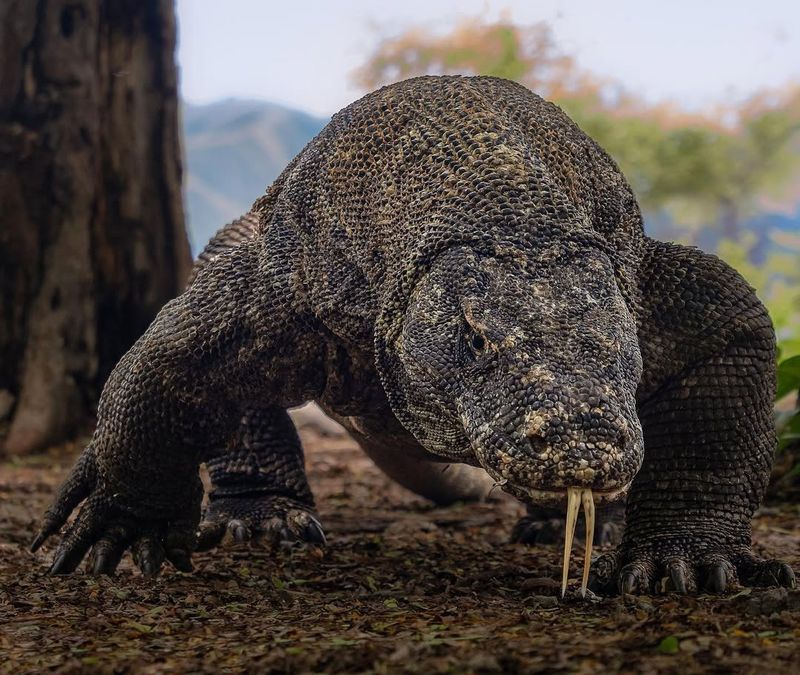
On the isolated islands of Indonesia, the Komodo dragon roams as the largest and most formidable lizard on Earth. Its massive size and lethal bite have earned it a fearsome reputation, and for good reason. Equipped with razor-sharp teeth and venomous saliva, it can take down prey much larger than itself.
Komodo dragons are opportunistic hunters, often ambushing their prey with surprising speed. They rely on their keen sense of smell to locate food, sometimes tracking wounded animals for miles. Their diet is diverse, ranging from carrion to large mammals.
Despite their fearsome demeanor, Komodo dragons are vulnerable to threats such as habitat loss and poaching. Conservation efforts are crucial to ensuring their survival in the wild. As apex predators, they play a vital role in regulating populations of other species on their native islands. The presence of these mighty lizards serves as a reminder of the island’s unique biodiversity and the importance of protecting such irreplaceable habitats.
6. Grizzly Bear
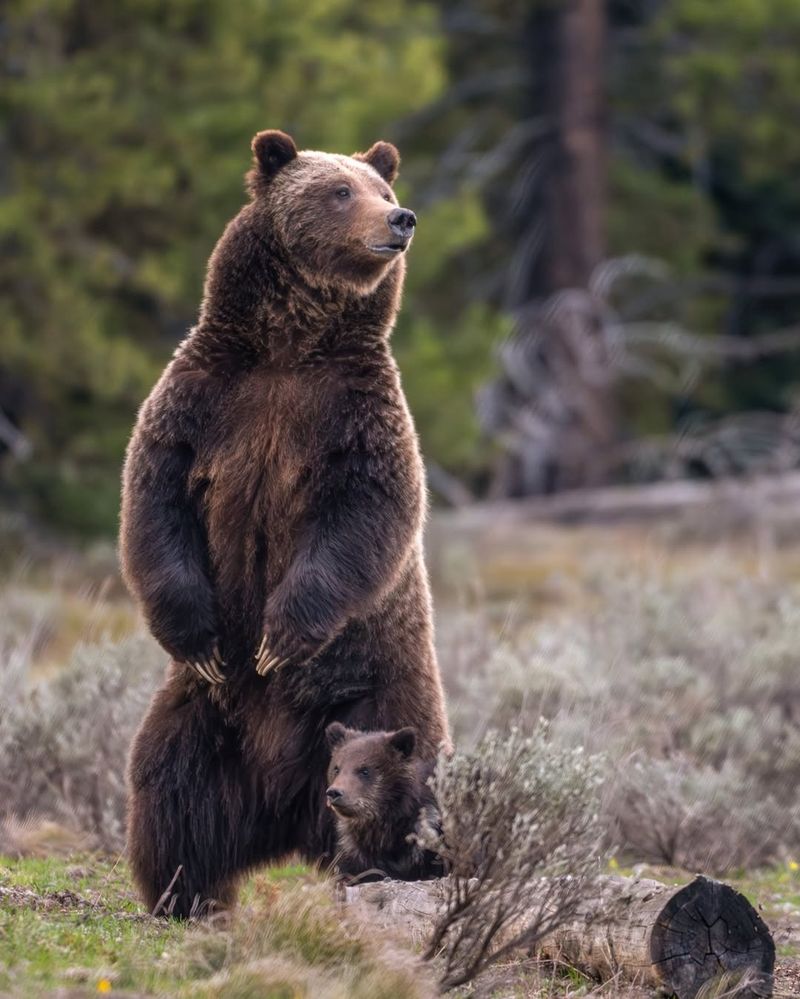
In the wild, untamed regions of North America, the grizzly bear asserts its dominance with sheer size and strength. These powerful mammals are omnivores, their diet consisting of everything from berries to large mammals. Their ability to adapt to various environments makes them formidable creatures of the wilderness.
Grizzlies are known for their incredible strength, capable of taking down prey much larger than themselves. Despite their size, they are surprisingly agile, able to run at impressive speeds when necessary. Their iconic hump of muscle on their shoulders is a testament to their power, aiding them in digging and hunting.
These bears play a crucial role in their ecosystems, influencing vegetation and prey populations. Human encounters can be dangerous, reminding us of the need for respect and caution in bear territory. Conservation efforts focus on preserving their habitats and mitigating human-wildlife conflict, ensuring that these magnificent creatures continue to roam the wild landscapes they call home.
7. Polar Bear
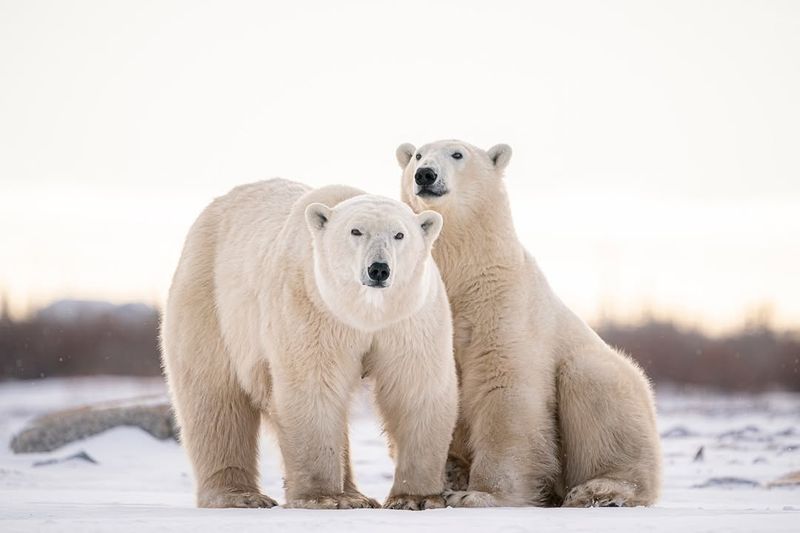
In the Arctic’s frozen expanse, the polar bear reigns as a symbol of endurance and survival. Adapted to one of the harshest climates on Earth, they are formidable predators, relying on their keen sense of smell to locate seals beneath the ice.
Polar bears are excellent swimmers, capable of covering vast distances in search of food. Their thick fur and layer of fat protect them from the freezing temperatures, allowing them to thrive in their icy domain. However, climate change poses a significant threat to their survival, as melting ice reduces their hunting grounds.
Conservation efforts aim to address these challenges, focusing on reducing greenhouse gas emissions and protecting critical habitats. Polar bears play a vital role in the Arctic ecosystem, serving as indicators of environmental health. Their majestic presence and undeniable strength remind us of the fragility of this unique environment and the urgent need to preserve it for future generations.
8. Black Mamba
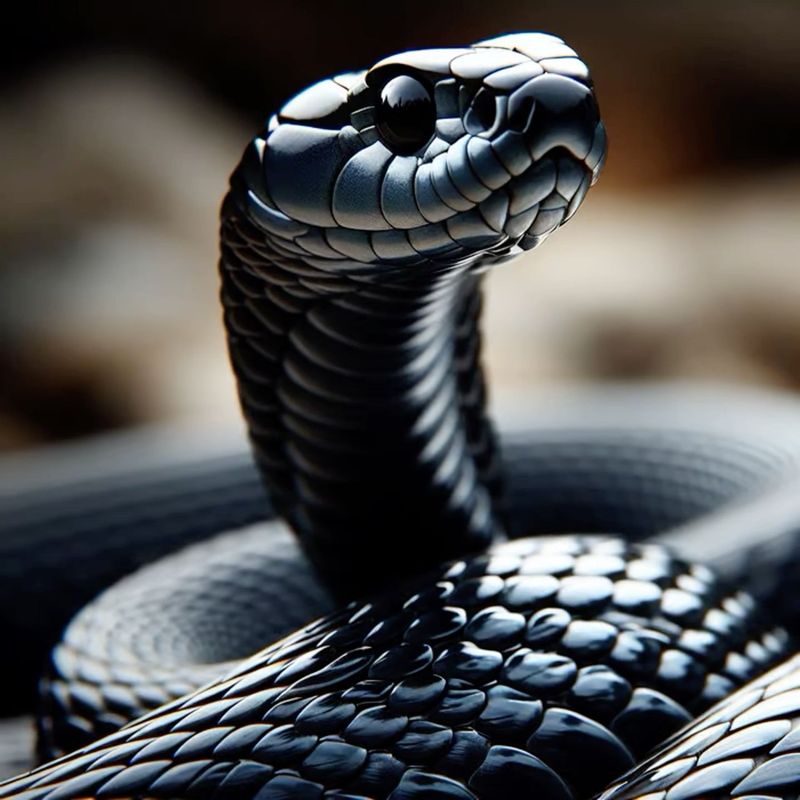
In the African wilderness, the black mamba commands respect as one of the most feared snakes in the world. Known for its incredible speed and potent venom, this snake is a master of survival in its arid habitat.
The black mamba’s reputation is well-deserved, with a bite that can be fatal if not treated promptly. Despite its fearsome nature, it prefers to avoid confrontation, often fleeing when threatened. Its agility and speed make it a formidable creature, capable of reaching speeds up to 12 miles per hour.
Conservationists work to protect the black mamba’s habitat, ensuring its survival amidst challenges like habitat destruction and human-wildlife conflict. As apex predators, they play a crucial role in controlling populations of rodents and other small animals. The black mamba’s place in the ecosystem highlights the intricate balance of nature and the importance of respecting these powerful creatures.
9. Honey Badger
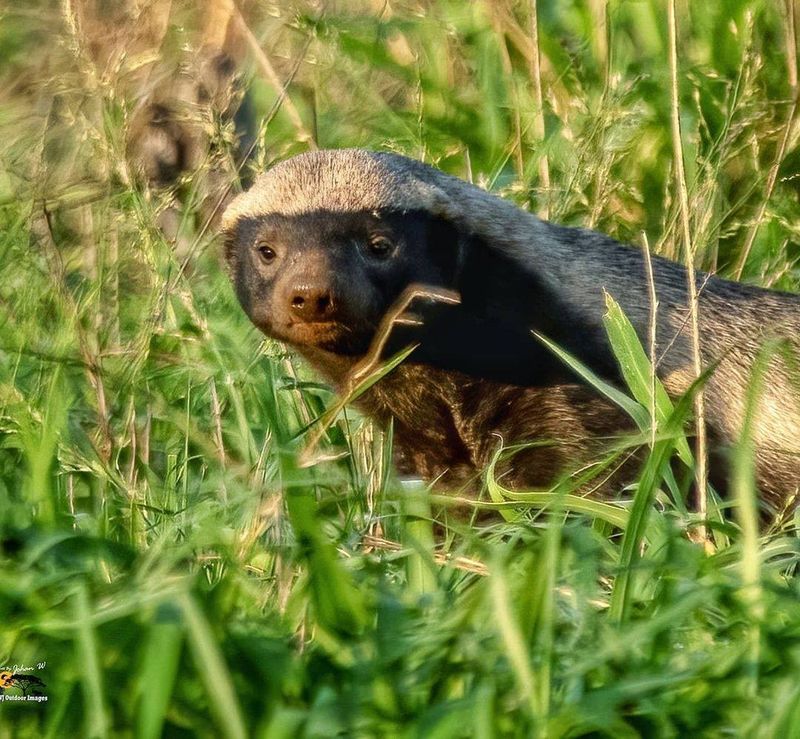
Meet the honey badger, a creature whose reputation for fearlessness is legendary. Despite its small size, this tenacious mammal takes on challenges that would make others cower. Known for its ferocious defense mechanisms, the honey badger is a true survivor.
These creatures are incredibly tough, with skin that can resist bites and stings. Their audacity is unmatched, often confronting larger predators with unyielding determination. They possess a versatile diet, consuming everything from insects to small mammals, showcasing their adaptability.
Honey badgers are solitary creatures, embracing their independence with gusto. Conservation efforts focus on protecting their habitats and raising awareness about their unique role in the ecosystem. Their bold nature and remarkable resilience have earned them a place among the most formidable of animals. As they continue to face the challenges of the wild, honey badgers remind us that courage comes in all shapes and sizes.
10. Wolverine
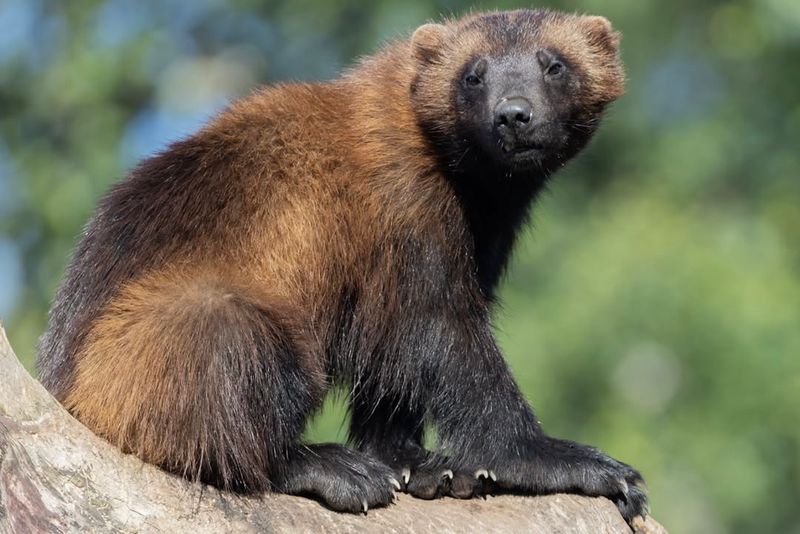
In the remote wilderness of the northern forests, the wolverine commands respect as a symbol of strength and tenacity. Known for its ferocity and determination, this elusive creature is a scavenger with a reputation for fearlessness.
Wolverines are solitary hunters, using their keen sense of smell to locate food in harsh environments. They are opportunistic feeders, capable of taking down prey much larger than themselves when necessary. Despite their small size, they are known to stand their ground against larger predators.
Conservation efforts aim to protect the wolverine’s habitat and ensure their continued survival. Their presence in the ecosystem helps control populations of smaller animals and maintain ecological balance. As we learn more about these mysterious creatures, we gain insight into the complexities of nature and the resilience of life in the wild. The wolverine’s indomitable spirit serves as a reminder of the power of persistence.
11. Tasmanian Devil
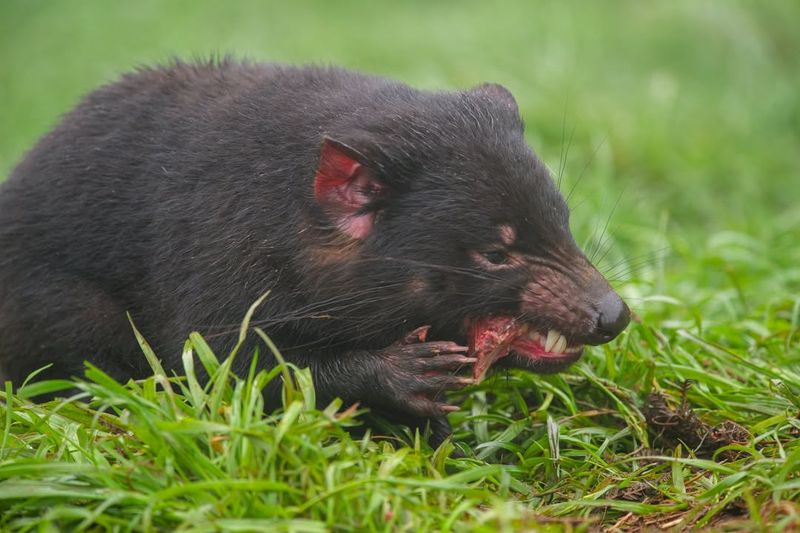
In the dense forests of Tasmania, the Tasmanian devil prowls with a fearsome reputation. Known for its bone-chilling screeches and fierce temperament, this marsupial is a scavenger with a powerful bite.
Despite their fearsome reputation, Tasmanian devils are relatively small, relying on their sharp teeth and strong jaws to consume a varied diet. They are nocturnal creatures, active mainly at night as they search for food. Their role as scavengers is crucial for the environment, as they help clean up carrion and maintain ecological balance.
Conservation efforts focus on combating threats such as disease and habitat loss to ensure the survival of these unique creatures. The Tasmanian devil’s tenacity and adaptability remind us of the importance of preserving biodiversity and protecting vulnerable species. As they continue to face challenges, these resilient animals embody the spirit of survival in a rapidly changing world.
12. Harpy Eagle
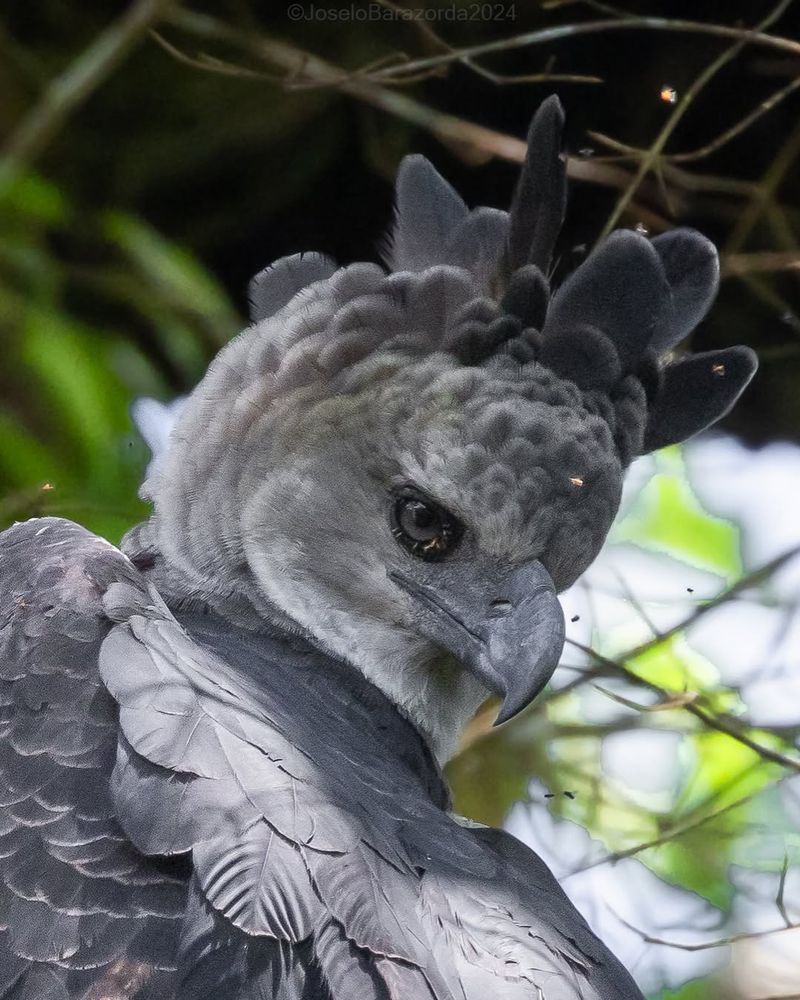
In the lush rainforests of South and Central America, the harpy eagle soars as a symbol of power and grace. With its impressive wingspan and sharp talons, it is one of the most formidable birds of prey in the world.
Harpy eagles are apex predators, their keen eyesight allowing them to spot prey from great distances. They hunt with precision, targeting monkeys and sloths in the treetops. Their powerful build enables them to snatch prey with deadly accuracy, showcasing their unmatched hunting skills.
These magnificent birds are threatened by habitat destruction and poaching, prompting conservation efforts to protect their habitats and ensure their survival. The harpy eagle’s presence in the ecosystem highlights the importance of preserving rainforests and the diverse species they support. As symbols of strength and beauty, these eagles inspire efforts to protect the natural world and its breathtaking inhabitants.
13. Jaguar
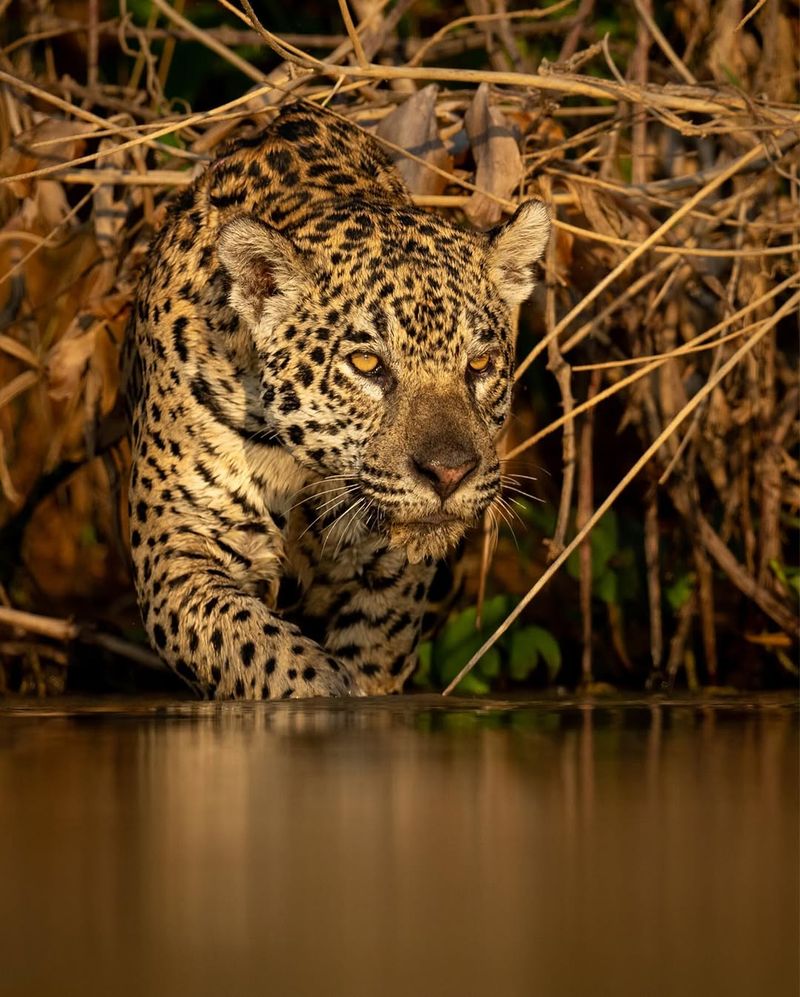
Deep in the heart of the jungle, the jaguar prowls as a master of stealth and power. Known for its striking appearance, with a golden coat and distinctive black rosettes, the jaguar is a solitary predator with a formidable presence.
Jaguars are excellent swimmers, often hunting in rivers and streams. Their powerful jaws allow them to crush the skulls of their prey, making them efficient hunters. They play a vital role in maintaining the balance of their ecosystems, controlling populations of other species.
Despite their prowess, jaguars face threats from habitat loss and poaching. Conservationists work tirelessly to protect these magnificent cats and their habitats. The jaguar’s mysterious allure and unmatched strength make it a true icon of the wild, reminding us of the need to preserve the natural world for future generations. Their graceful movements and captivating presence capture the imagination of all who encounter them.
14. Cassowary
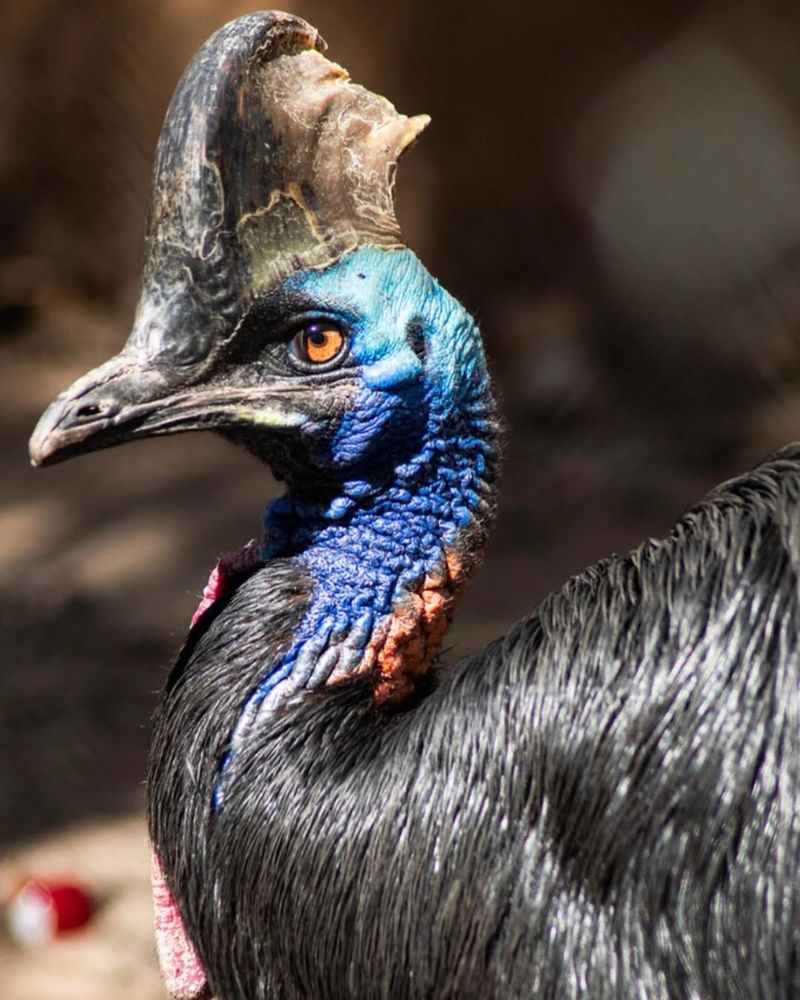
In the dense tropical forests of New Guinea and northern Australia, the cassowary struts with an air of mystery and menace. Known for its striking appearance, this large flightless bird is both beautiful and dangerous.
Cassowaries are equipped with powerful legs and sharp claws, capable of delivering swift and deadly kicks. Despite their intimidating nature, they play a crucial role in their ecosystems, dispersing seeds through their droppings and helping maintain forest diversity.
These birds are shy and elusive, preferring to avoid human contact. Conservation efforts focus on protecting their habitats from deforestation and other threats. The cassowary’s vibrant presence in the forest underscores the importance of biodiversity and the need to safeguard natural habitats. Their unique adaptations and striking appearance make them a fascinating subject for those interested in the wonders of the natural world.
15. Bull Shark
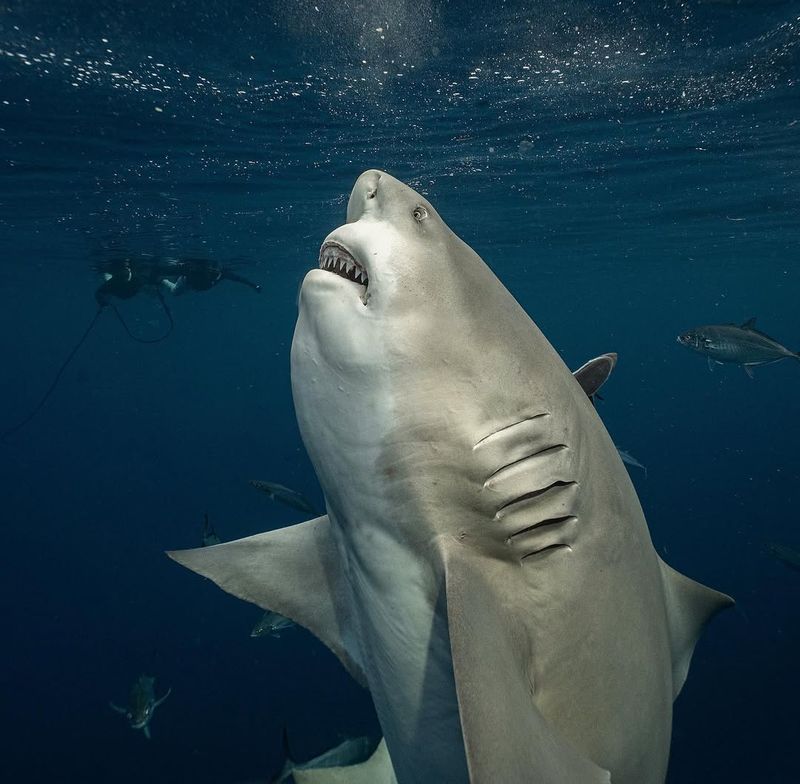
Venturing into the warm coastal waters and rivers, the bull shark reigns with a reputation for aggression and adaptability. Known for its robust build and powerful bite, this shark is a formidable predator in both salt and freshwater environments.
Bull sharks are one of the few species that can thrive in freshwater, often found far upriver. This adaptability allows them to exploit a wide range of habitats and prey. Their opportunistic feeding habits make them a crucial part of marine and riverine ecosystems, maintaining the balance of species within these environments.
Despite their reputation, bull sharks face threats from overfishing and habitat degradation. Conservation efforts aim to protect these versatile predators and ensure the health of the ecosystems they inhabit. The bull shark’s fearsome nature and unique adaptations highlight the incredible diversity of life in our oceans and waterways. Their presence serves as a reminder of the complex interplay of species that sustains the natural world.
16. Anaconda
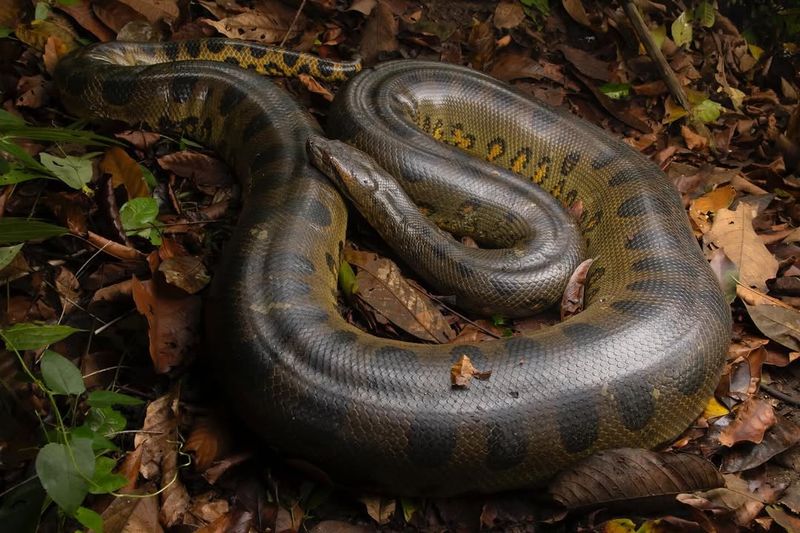
In the heart of the Amazon rainforest, the anaconda slithers as one of the largest and most powerful snakes in the world. Known for its massive size and constricting strength, this serpent is a master of ambush and stealth.
Anacondas are primarily aquatic, often found lurking in swamps and rivers. Their immense strength allows them to subdue large prey, including deer and caimans. Despite their size, they are adept swimmers, moving gracefully through their watery domain.
These giant snakes face threats from habitat destruction and hunting. Conservation efforts focus on protecting their habitats and educating communities about their ecological importance. The anaconda’s presence in the jungle is a testament to the incredible biodiversity of the Amazon and the need to preserve it. Their elusive nature and awe-inspiring size captivate those who venture into their territory, reminding us of the mysteries that still lie hidden in the wild.
